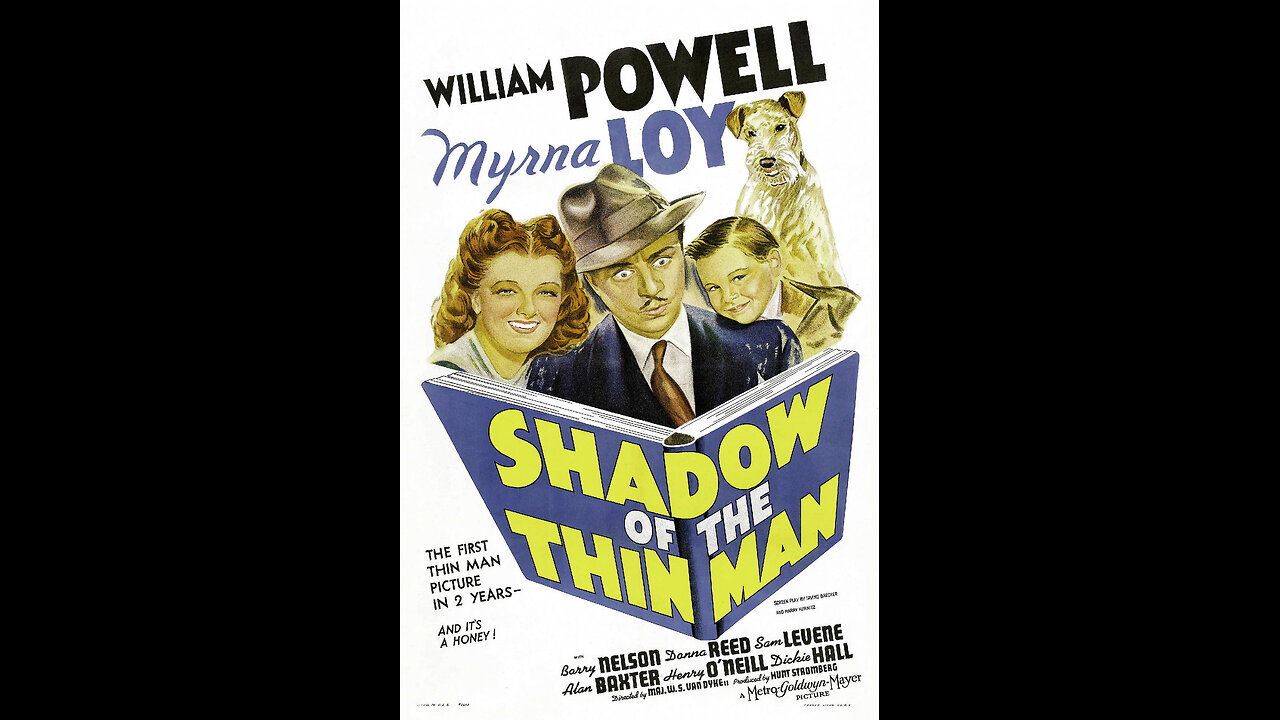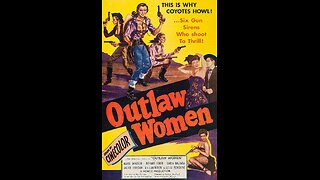Premium Only Content

Shadow of the Thin Man (1941) | Directed by W.S. Van Dyke
"Shadow of the Thin Man" is the fourth installment in the "Thin Man" film series directed by W.S. Van Dyke. The film once again follows the sophisticated and witty detective duo, Nick (William Powell) and Nora Charles (Myrna Loy). This time, the couple becomes embroiled in a murder mystery surrounding the death of a jockey at a racetrack. As Nick delves into the investigation, he must navigate a world of horse racing, gambling, and a colorful cast of characters to uncover the truth behind the crime.
Dynamic Duo Continues:
William Powell and Myrna Loy continue to shine as Nick and Nora Charles. Their on-screen chemistry remains the driving force of the film, with Powell's suave and humorous portrayal complemented by Loy's sophisticated and endearing performance. The Charles couple once again proves to be the heart of the "Thin Man" series.
Mystery and Suspense:
The film skillfully blends elements of mystery and suspense with the glamorous backdrop of the racetrack. The murder mystery is layered with unexpected twists and turns, providing both intrigue and entertainment. Nick Charles, armed with his sharp wit and deductive skills, navigates the complexities of the case, keeping the audience engaged in solving the puzzle.
Supporting Characters and Refined Humor:
"Shadow of the Thin Man" introduces a new set of supporting characters, each adding a layer of complexity to the story. From fellow racegoers to potential suspects, the ensemble cast brings diversity and humor to the narrative. Nick and Nora's interactions with these characters contribute to the film's refined and witty sense of humor.
Racetrack Setting and Atmosphere:
The racetrack setting adds a unique flavor to the film, creating a backdrop of excitement and tension. The atmosphere of the racetrack, with its hustle and bustle, becomes an integral part of the narrative. The cinematography captures the glamour and energy of the racetrack, enhancing the overall visual appeal of the film.
Cinematic Style and Direction:
W.S. Van Dyke's direction maintains the stylish and polished aesthetic of the "Thin Man" series. The film's visual style is characterized by its elegant settings, sharp cinematography, and seamless integration of humor into the detective narrative. Van Dyke's directorial choices contribute to the film's overall charm.
Musical Score and Tone:
The musical score, composed by David Snell, complements the film's tone, enhancing both its comedic and mysterious elements. The use of music contributes to the overall atmosphere, creating a soundtrack that aligns with the series' signature style. The film's musical choices enhance key moments, adding to the overall cinematic experience.
Cultural Context:
Set against the backdrop of the early 1940s, "Shadow of the Thin Man" reflects the cultural norms and societal expectations of the time. The film captures the sophistication and glamour associated with the era, while presenting a detective story with a contemporary twist.
Legacy and Series Continuity:
"Shadow of the Thin Man" seamlessly continues the legacy of the "Thin Man" series, maintaining the spirit and tone of its predecessors. The film's success lies in its ability to deliver what fans of the series love — the dynamic between Nick and Nora, a captivating mystery, and the sophisticated allure of the detective genre.
Conclusion:
"Shadow of the Thin Man" stands as another successful entry in the "Thin Man" series, blending mystery, humor, and style. With its engaging narrative, strong performances, and the enduring appeal of the Nick and Nora Charles characters, the film remains a classic example of the detective comedy genre. It upholds the series' legacy and further solidifies the reputation of the Charles couple as one of the most beloved detective duos in cinematic history.
-
 1:15:12
1:15:12
Classic Films & Movies Archive
2 days agoOutlaw Women (1952) | Directed by Sam Newfield & Ron Ormond
882 -
 2:04:44
2:04:44
TheAlecLaceShow
19 hours agoLive at CPAC | Interviews with Dean Cain, Rep. Comer and more! | The Alec Lace Show
62.3K3 -
 LIVE
LIVE
Major League Fishing
3 days agoLIVE Tackle Warehouse Invitationals, Stop 1, Day 2
358 watching -
 3:12:37
3:12:37
I_Came_With_Fire_Podcast
15 hours agoNOC Spy: CIA uses SATANIC RITUAL ABUSE to make SLEEPER Cells
69.1K10 -
 28:42
28:42
CatfishedOnline
1 day ago $3.17 earnedWoman Insists Morgan Wallen Relationship Isn't a Romance Scam!
53.3K2 -
 16:25
16:25
TSPLY
1 day agoNew CNN / MSNBC Meltdown Moments Of Getting Mad At Donald Trump In February
50.7K29 -
 8:33
8:33
scoutthedoggie
9 hours agoAirsoft War Games Scotland
65.5K7 -
 4:56
4:56
Kirill MultitoolOfficial
1 day ago $4.09 earnedSurvival TIPS and usefull bushcraft DIY in the wild
66.6K4 -
 27:25
27:25
ArturRehi
1 day agoThis is How Dictatorships are Formed
39.3K7 -
 59:35
59:35
AlaskanBallistics
22 hours ago $1.44 earnedI Love this Gun Episode # 11
28.7K1